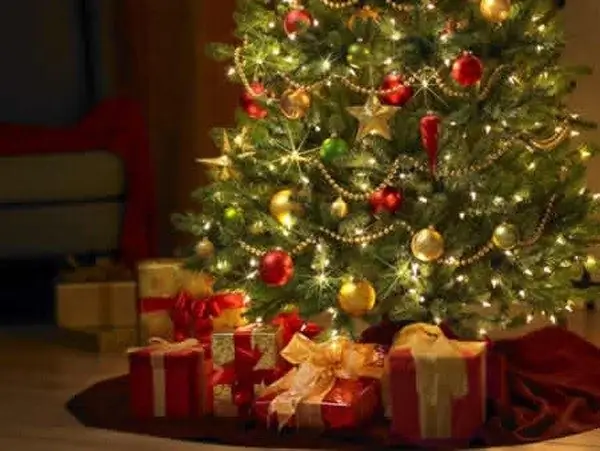- Author Caroline Forman [email protected].
- Public 2023-12-16 11:46.
- Last modified 2025-01-23 09:54.
The Christmas tree is the most important attribute of everyone's favorite holiday. A tree exuding a unique aroma is present on New Year's Eve in almost every apartment. And the ceremony of decorating the Christmas tree with various garlands, glass balls and tinsel brings a lot of positive emotions to all family members. So where did this tradition come from - decorating the Christmas tree?

This good custom is associated with another winter holiday - Christmas. According to an old legend, about two thousand years ago, Jesus was born in the holy city of Bethlehem. Not only people, but also animals and plants gathered from all over the world to congratulate the Virgin Mary on the birth of the Savior. All the guests presented little Jesus with a present.
Spruce also came from the far north. She had nothing to give to Christ, she was ashamed of her thorny needles and modestly remained aloof. Then other plants shared their gifts with Spruce. So sweet fruits, beautiful flowers, green leaves appeared on its branches. The elegant Spruce approached the Baby, he pulled his hands to her and smiled happily. At that moment, the star of Bethlehem was sown brightly on the top of the tree.
Thus, the tree became a symbol of Christmas, and later the New Year. Since then, people began to bring conifers into the house and decorate them with all available means. At first, these were natural or artificial flowers, fruits, nuts, sweets. Later - colored garlands, tinsel, toys.
At all times, people believed in the magical power of the tree. Spruce was believed to be the queen of all trees. Presenting various gifts to its foot, people hoped that thanks to this, a good harvest and prosperity awaited them in the future.
The tradition of decorating the New Year tree came to Russia during the reign of Peter the Great. Then, under the influence of Europe, ate was put on a holiday only in St. Petersburg in the houses of the Germans and the tsarist entourage. By the end of the 19th century, Christmas trees had become a ubiquitous symbol of the holiday throughout the country.
In 1918, the celebration of Christmas in Soviet Russia was banned by the Bolsheviks, and with it the holiday fir tree, as a religious symbol, was banned. The final eradication of all Christian holidays took place in 1929. But already in 1935 a “New Year's tree for children” was organized, the society reacted very vividly, and spruce trees and decorations for them appeared on sale again. An unforgotten tradition has been revived. Since then, the tree has been an integral part of the Russian New Year and Christmas.






